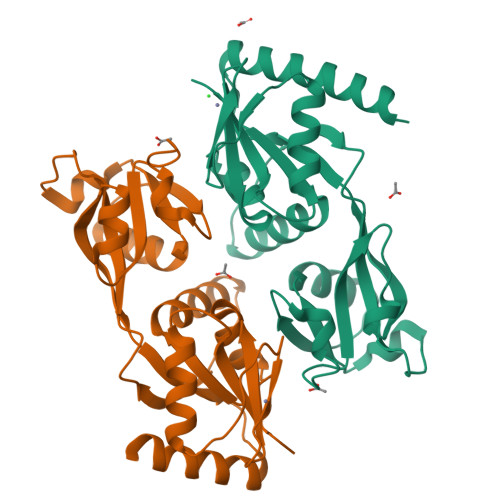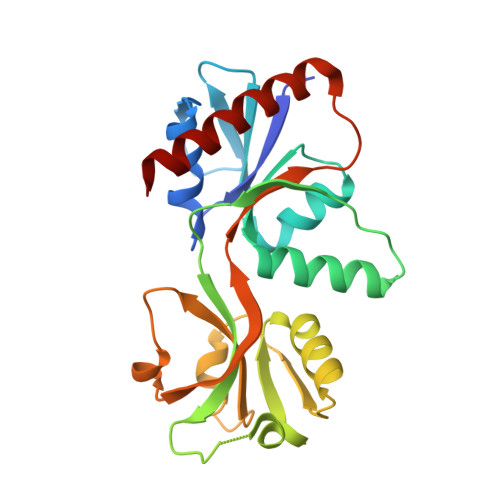A dimeric catalytic core relates the short and long forms of ATP-phosphoribosyltransferase.
Mittelstadt, G., Jiao, W., Livingstone, E.K., Moggre, G.J., Nazmi, A.R., Parker, E.J.(2018) Biochem J 475: 247-260
- PubMed: 29208762
- DOI: https://doi.org/10.1042/BCJ20170762
- Primary Citation of Related Structures:
5UB9, 5UBG, 5UBH, 5UBI - PubMed Abstract:
Adenosine triphosphate (ATP) phosphoribosyltransferase (ATP-PRT) catalyses the first committed step of histidine biosynthesis in plants and microorganisms. Two forms of ATP-PRT have been reported, which differ in their molecular architecture and mechanism of allosteric regulation. The short-form ATP-PRT is a hetero-octamer, with four HisG chains that comprise only the catalytic domains and four separate chains of HisZ required for allosteric regulation by histidine. The long-form ATP-PRT is homo-hexameric, with each chain comprising two catalytic domains and a covalently linked regulatory domain that binds histidine as an allosteric inhibitor. Here, we describe a truncated long-form ATP-PRT from Campylobacter jejuni devoid of its regulatory domain ( Cje ATP-PRT core ). Results showed that Cje ATP-PRT core is dimeric, exhibits attenuated catalytic activity, and is insensitive to histidine, indicating that the covalently linked regulatory domain plays a role in both catalysis and regulation. Crystal structures were obtained for Cje ATP-PRT core in complex with both substrates, and for the first time, the complete product of the reaction. These structures reveal the key features of the active site and provide insights into how substrates move into position during catalysis.
Organizational Affiliation:
Maurice Wilkins Centre, Biomolecular Interaction Centre and Department of Chemistry, University of Canterbury, Christchurch 8041, New Zealand.





















